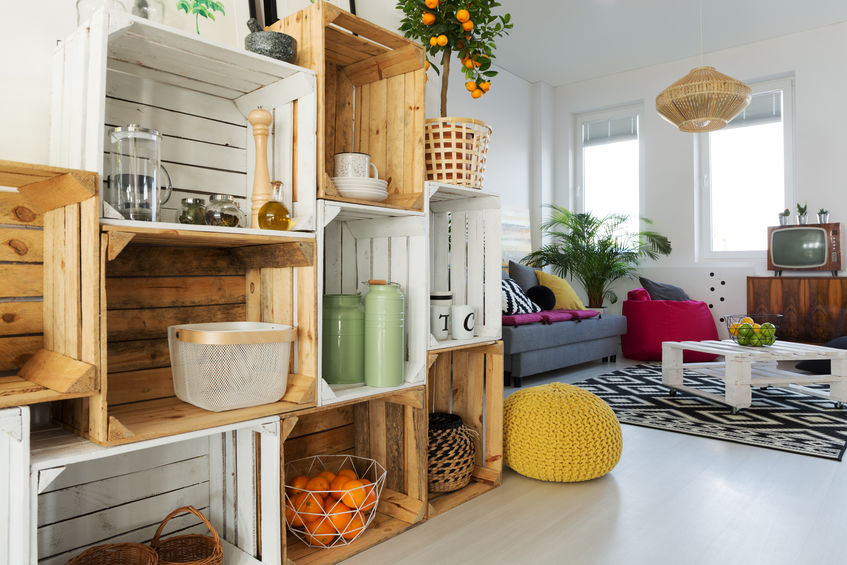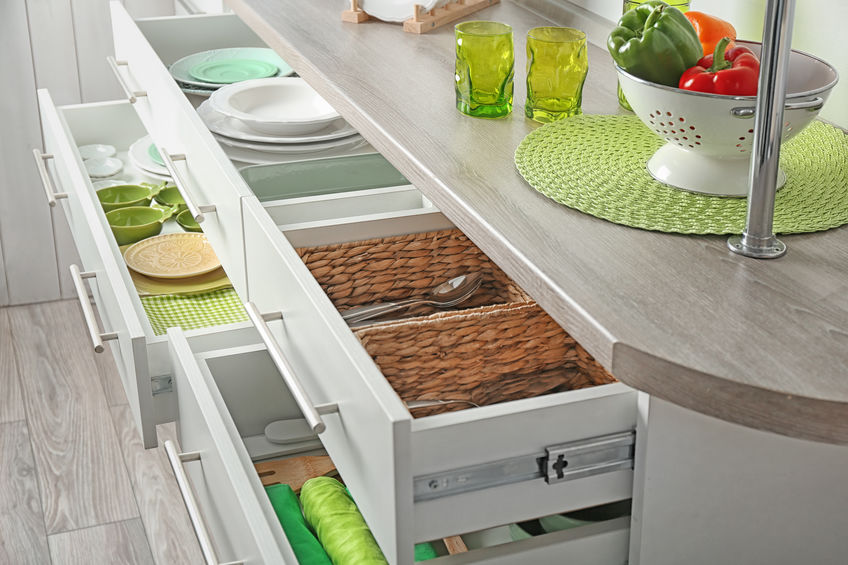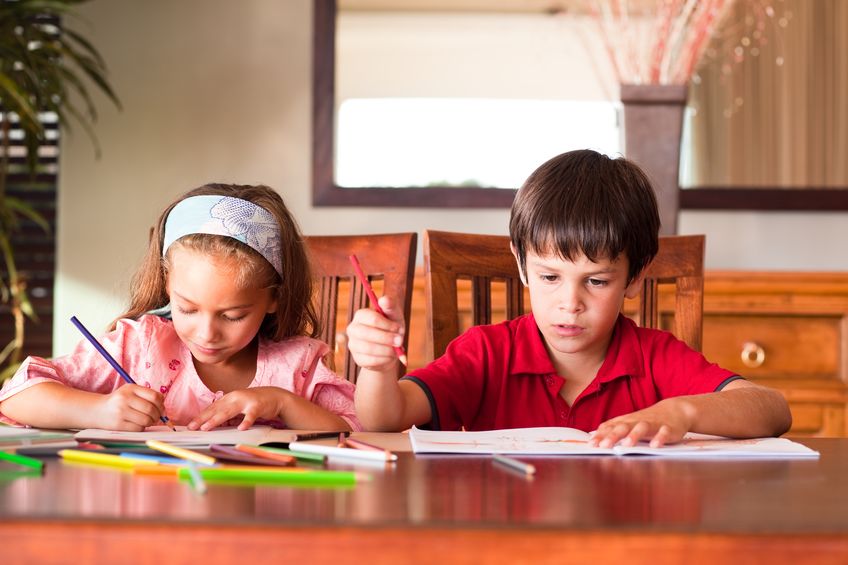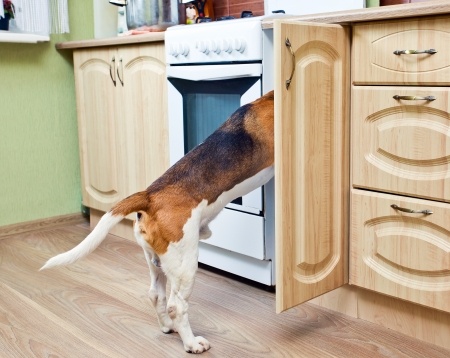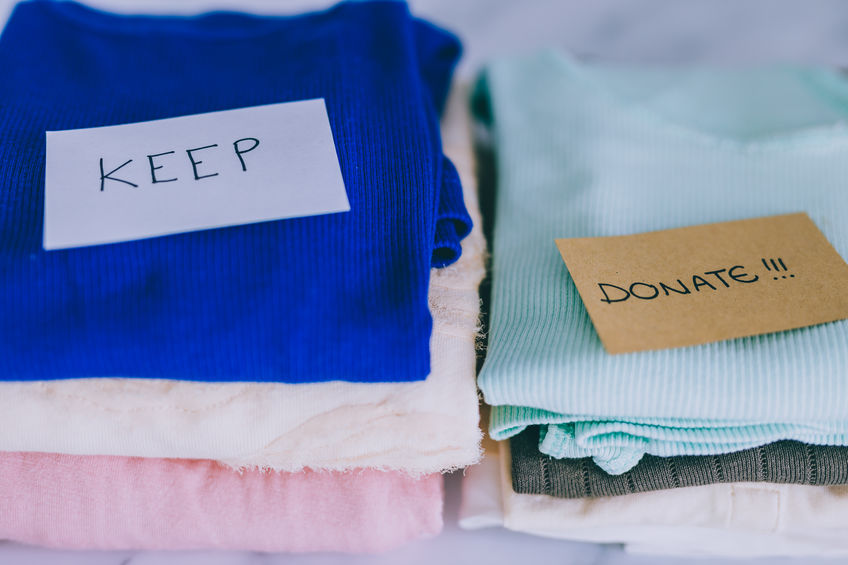- Clean Home
- Organize Your Home
- Getting Organized At Home
Getting Organized At Home
Getting organized at home boils down to regularly doing three things:
- Grouping similar items together
- Storing things in logical places
- Labeling everything
It's so much easier to find things if they are in groups, not spread all over the house. At least you'll know the general location to start looking for something.
Getting Organized At Home: Group Like Items
I know one woman who keeps some food in her kitchen, more in her coat closet, and still more in her basement. When she's looking for a box of rice, she has to search in three places!
Instead, as you're getting organized, put all food in one area of your kitchen, pots, and pans in one cabinet, towels in one closet, and all luggage together - you get the idea!
Store Things in Convenient Places
Often, things can't be found - or are found but need to be put away in the right place - because they are in the wrong place.
Getting organized at home starts by addressing this fundamental truth of disorganization: If an item (say, a telephone directory) were where it was needed (say, by the phone), it would be easy to know where to find it. And then anyone in the family would know the place to return it.
But if the phone directory is stored atop the microwave oven, 14 feet away from the phone, it's easy to forget its location because it's not logical.
If things are located logically, you will remember where you put them. Your kids, bless their sweet little hearts, will inevitably blame it on your age. And who needs them to bring that up again?!
Here's the secret to getting organized at home: find a logical storage place for every item—put it where you use it!
For example, store your keys by the door, keep your lint brush near your clothes, and stash your vases under the sink. Another way to look at this when getting organized is to think about activity centers.
For example, if the kids always do their homework on the kitchen table, keep a file, drawer, or basket nearby with all the supplies they need to complete the task.
If you like to read in bed, keep reading materials, eyeglasses, and a reading light in a basket by your bed.
Try to arrange your life so that your necessities are at your fingertips, and you don't have to spend your little free time jumping up and down to find things.
A challenge can arise when one item is used in several locations. The solution? Buy two, three, or four of them.
If you have only one pair of scissors stored in the sewing basket in the upstairs closet, kids must get it for each art project and then walk back upstairs to return it. Oh, sure, that will happen.
The scissors will never be returned. If you frequently use scissors in every room of the house, consider buying a pair for each room.
Such a purchase is worth the expense if it saves you hours looking for the *&###!!! Scissors. Time is money.
Store things in logical places and convenient locations. For example, put items you often use on eye-level shelves and in handy cabinets.
Put things you rarely use on top shelves and in the back of closets. That sounds like a getting organized no-brainer. But before you laugh, think about where you put things.
If your favorite spatula is thrown in a drawer with 23 other kitchen utensils, move it onto the counter next to the stoves, perhaps in a pretty crock. (And resist the temptation to move the other 23 less-useful tools along with it!)
If things aren't conveniently located, you won't return them to their proper resting place, and neither will the kids. It's just too inconvenient!
Lastly, getting organized at home requires that storage places be accessible, both to you and to your kids. If things aren't readily accessible, kids will use inappropriate things to do the job, such as a table knife for a screwdriver, and foul things up royally.
For example, if you expect the kids to feed the dog, put the dog food on a shelf where they can reach it (preferably somewhere near the dish but out of the dog's reach). You owe it to yourself to make putting stuff away easy for your family.
Getting Organized at Home Means Labeling (Almost) Everything
If everything is marked, there are no excuses for not knowing where to find it and where to return it. Portable electronic labelers, which are now affordable, thankfully, are an organized mom's dream.
What bears marking? Label the locations for everything, including boxes, closet shelves, drawers, spare keys, the fuse box, and virtually anything else that someone might not immediately be able to figure out on their own, such as which switch is "on" and where you put the guest hand towels.
That way, everyone in the home, including visiting friends, relatives, and babysitters, knows exactly where things are and where to return them.
Take my youngest son Payne's closet, for example. Before I labeled where everything goes, I put things one way, the babysitter another. This lack of a system made Payne's closet an infuriating jumble to wade through when it was time to get dressed each morning.
Solution: I labeled Payne's closet shelves to designate what goes where: "pajamas," "short-sleeve shirts," "swimwear and gear," etc. Now, if you can read, you can put things away correctly. (And for those who can't read, you can attach drawings or stickers to designate proper storage places.)
Who knew getting organized could be so easy?
- Clean Home
- Organize Your Home
- Getting Organized At Home
